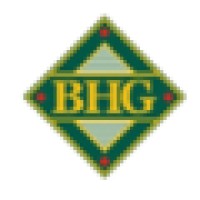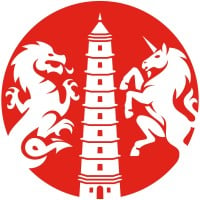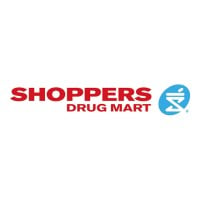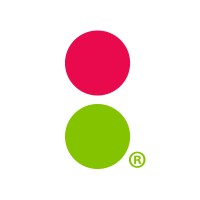
Beijing Hualian Group Company Cyber Security Posture
beijing-hualian.comThe Beijing Hualian Group Investment Holding Co.,Ltd. (referred to in short as, the Beijing Hualian Group) is one of the 15 largest retail enterprises supported by Ministry of Commerce. The Beijing Hualian Group is also the only Chinese retail member in the International Association of Department Stores (IADS). The Beijing Hualian Group has two publicly listed companies and several holding companies. The Group’s business is primarily focused on hypermarkets, supermarkets, department stores and commercial properties. By the end of 2007, the Group owned more than 80 hypermarkets in 35 key cities and 23 provinces across the country. Each store has more than 10,000 m2 of floor space. The Group operates with top flight management resources, merchandising resources and human resources. The Beijing Hualian Group has established a strong and growing retail network throughout the country. The Beijing Hualian Group values customers first and foremost. We commit ourselves to a retail operation that faithfully serves our customers. Our core principles include sincerity and honesty in all relationships -- with employees, customers, suppliers and cooperating partners. We seek to maintain and grow our company’s high recognition and reputation, and made “Beijing Hualian” a prestigious brand in the country. Two listed companies Beijing Hualian Hypermarket Co., Ltd. established in June 1996, was listed on the Shanghai Stock Exchange on Nov.29th, 2001 (BHHC stock code:600361). The focus of this business is primarily supermarkets/hypermarkets, department stores and other retail formats. Beijing Hualian Department Store Co., Ltd. established in May 1998, has been listed in Shenzhen Stock Exchange Bureau in Jun. 16th, 1998 (BHDS, stock code: 000882). The primary focus of this business is commercial property.
BHG Company Details
beijing-hualian-group
10,001+ employees
0
452
Retail
beijing-hualian.com
10
BEI_1202274
In-progress
Between 700 and 800
This score is AI-generated and less favored by cyber insurers, who prefer the TPRM score.
 BHG Global Score
BHG Global Score.png)

Beijing Hualian Group Company Scoring based on AI Models
| Model Name | Date | Description | Current Score Difference | Score |
|---|---|---|---|---|
| AVERAGE-Industry | 03-12-2025 | This score represents the average cybersecurity rating of companies already scanned within the same industry. It provides a benchmark to compare an individual company's security posture against its industry peers. | N/A | Between 700 and 800 |
Beijing Hualian Group Company Cyber Security News & History
| Entity | Type | Severity | Impact | Seen | Url ID | Details | View |
|---|
Beijing Hualian Group Company Subsidiaries

The Beijing Hualian Group Investment Holding Co.,Ltd. (referred to in short as, the Beijing Hualian Group) is one of the 15 largest retail enterprises supported by Ministry of Commerce. The Beijing Hualian Group is also the only Chinese retail member in the International Association of Department Stores (IADS). The Beijing Hualian Group has two publicly listed companies and several holding companies. The Group’s business is primarily focused on hypermarkets, supermarkets, department stores and commercial properties. By the end of 2007, the Group owned more than 80 hypermarkets in 35 key cities and 23 provinces across the country. Each store has more than 10,000 m2 of floor space. The Group operates with top flight management resources, merchandising resources and human resources. The Beijing Hualian Group has established a strong and growing retail network throughout the country. The Beijing Hualian Group values customers first and foremost. We commit ourselves to a retail operation that faithfully serves our customers. Our core principles include sincerity and honesty in all relationships -- with employees, customers, suppliers and cooperating partners. We seek to maintain and grow our company’s high recognition and reputation, and made “Beijing Hualian” a prestigious brand in the country. Two listed companies Beijing Hualian Hypermarket Co., Ltd. established in June 1996, was listed on the Shanghai Stock Exchange on Nov.29th, 2001 (BHHC stock code:600361). The focus of this business is primarily supermarkets/hypermarkets, department stores and other retail formats. Beijing Hualian Department Store Co., Ltd. established in May 1998, has been listed in Shenzhen Stock Exchange Bureau in Jun. 16th, 1998 (BHDS, stock code: 000882). The primary focus of this business is commercial property.
Access Data Using Our API

Get company history
.png)
BHG Cyber Security News
Beijing Hualian nearing SKP mall sale to Boyu in reported $5 billion deal
SKP operates luxury malls in Beijing, Xi'an, Chengdu, and Wuhan, with another site currently under construction in Hangzhou. The sources, ...
SKP Beijing to Sell 42 to 45 Percent Stake to Boyu Capital
The Chinese luxury department store SKP's operational and management structure will remain unchanged, according to a notice published by ...
Post-COVID surge wanes as global department store sales drop 1.6%
The post-COVID-19 peak seen in 2021 and 2022 is now behind us, and overall retail growth has stabilized. Department stores have followed this ...

BHG Similar Companies

AS Watson
AS Watson Group, the world’s largest international health and beauty retailer, is operating over 16,500 stores under 12 retail brands in 28 markets, with over 130,000 employees worldwide. For the fiscal year 2023, AS Watson Group recorded revenue of US$23 billion. Every year, we are serving over 5.5

Shoppers Drug Mart
Built on a foundation of professional expertise and personal service, Shoppers Drug Mart has been meeting Canadians' health care needs for 50 years. What was once a small pharmacy in Toronto has grown into an organization of over 1,200 stores from coast to coast, becoming an indelible part of the l

Massimo Dutti
Massimo Dutti (Inditex Group) was founded in 1985 and was acquired by Inditex in 1991. It now has over 700 stores in more than 72 countries. The brand was originally aimed at men's fashion. Starting in 1995, women's fashion was launched in all its dimensions: from the most urban lines to the more c

Stop & Shop
Stop & Shop has been around for more than 100 years. We started small, as a corner grocery store back in 1914. And we’ve grown…a lot. We have more than 50,000 Associates in 350+ stores throughout Massachusetts, Connecticut, Rhode Island, New York, and New Jersey. Through that change, our values have

Grupo Carrefour Brasil
Reunimos uma equipe com mais de 70.000 colaboradores que representam a diversidade deste país. Hoje, somos um dos maiores empregadores do Brasil. Junto com os nossos fornecedores e parceiros, estamos comprometidos em satisfazer e encantar os consumidores todos os dias, construindo a nossa história

L Brands
On August 2, 2021, L Brands (NYSE: LB) completed the separation of the Victoria’s Secret business into an independent, public company through a tax-free spin-off to L Brands shareholders. The new company, named Victoria’s Secret & Co., includes Victoria’s Secret Lingerie, PINK and Victoria’s Secret

Frequently Asked Questions (FAQ) on Cybersecurity Incidents
BHG CyberSecurity History Information
Total Incidents: According to Rankiteo, BHG has faced 0 incidents in the past.
Incident Types: As of the current reporting period, BHG has not encountered any cybersecurity incidents.
Total Financial Loss: The total financial loss from these incidents is estimated to be {total_financial_loss}.
Cybersecurity Posture: The company's overall cybersecurity posture is described as The Beijing Hualian Group Investment Holding Co.,Ltd. (referred to in short as, the Beijing Hualian Group) is one of the 15 largest retail enterprises supported by Ministry of Commerce. The Beijing Hualian Group is also the only Chinese retail member in the International Association of Department Stores (IADS). The Beijing Hualian Group has two publicly listed companies and several holding companies. The Group’s business is primarily focused on hypermarkets, supermarkets, department stores and commercial properties. By the end of 2007, the Group owned more than 80 hypermarkets in 35 key cities and 23 provinces across the country. Each store has more than 10,000 m2 of floor space. The Group operates with top flight management resources, merchandising resources and human resources. The Beijing Hualian Group has established a strong and growing retail network throughout the country. The Beijing Hualian Group values customers first and foremost. We commit ourselves to a retail operation that faithfully serves our customers. Our core principles include sincerity and honesty in all relationships -- with employees, customers, suppliers and cooperating partners. We seek to maintain and grow our company’s high recognition and reputation, and made “Beijing Hualian” a prestigious brand in the country. Two listed companies Beijing Hualian Hypermarket Co., Ltd. established in June 1996, was listed on the Shanghai Stock Exchange on Nov.29th, 2001 (BHHC stock code:600361). The focus of this business is primarily supermarkets/hypermarkets, department stores and other retail formats. Beijing Hualian Department Store Co., Ltd. established in May 1998, has been listed in Shenzhen Stock Exchange Bureau in Jun. 16th, 1998 (BHDS, stock code: 000882). The primary focus of this business is commercial property..
Detection and Response: The company detects and responds to cybersecurity incidents through {description_of_detection_and_response_process}.
Incident Details
Incident 1: Ransomware Attack
Title: {Incident_Title}
Description: {Brief_description_of_the_incident}
Date Detected: {Detection_Date}
Date Publicly Disclosed: {Disclosure_Date}
Date Resolved: {Resolution_Date}
Type: {Type_of_Attack}
Attack Vector: {Attack_Vector}
Vulnerability Exploited: {Vulnerability}
Threat Actor: {Threat_Actor}
Motivation: {Motivation}
Incident 2: Data Breach
Title: {Incident_Title}
Description: {Brief_description_of_the_incident}
Date Detected: {Detection_Date}
Date Publicly Disclosed: {Disclosure_Date}
Date Resolved: {Resolution_Date}
Type: {Type_of_Attack}
Attack Vector: {Attack_Vector}
Vulnerability Exploited: {Vulnerability}
Threat Actor: {Threat_Actor}
Motivation: {Motivation}
Common Attack Types: As of now, the company has not encountered any reported incidents involving common cyberattacks.
Identification of Attack Vectors: The company identifies the attack vectors used in incidents through {description_of_identification_process}.
Impact of the Incidents
Incident 1: Ransomware Attack
Financial Loss: {Financial_Loss}
Data Compromised: {Data_Compromised}
Systems Affected: {Systems_Affected}
Downtime: {Downtime}
Operational Impact: {Operational_Impact}
Conversion Rate Impact: {Conversion_Rate_Impact}
Revenue Loss: {Revenue_Loss}
Customer Complaints: {Customer_Complaints}
Brand Reputation Impact: {Brand_Reputation_Impact}
Legal Liabilities: {Legal_Liabilities}
Identity Theft Risk: {Identity_Theft_Risk}
Payment Information Risk: {Payment_Information_Risk}
Incident 2: Data Breach
Financial Loss: {Financial_Loss}
Data Compromised: {Data_Compromised}
Systems Affected: {Systems_Affected}
Downtime: {Downtime}
Operational Impact: {Operational_Impact}
Conversion Rate Impact: {Conversion_Rate_Impact}
Revenue Loss: {Revenue_Loss}
Customer Complaints: {Customer_Complaints}
Brand Reputation Impact: {Brand_Reputation_Impact}
Legal Liabilities: {Legal_Liabilities}
Identity Theft Risk: {Identity_Theft_Risk}
Payment Information Risk: {Payment_Information_Risk}
Average Financial Loss: The average financial loss per incident is {average_financial_loss}.
Commonly Compromised Data Types: The types of data most commonly compromised in incidents are {list_of_commonly_compromised_data_types}.
Incident 1: Ransomware Attack
Entity Name: {Entity_Name}
Entity Type: {Entity_Type}
Industry: {Industry}
Location: {Location}
Size: {Size}
Customers Affected: {Customers_Affected}
Incident 2: Data Breach
Entity Name: {Entity_Name}
Entity Type: {Entity_Type}
Industry: {Industry}
Location: {Location}
Size: {Size}
Customers Affected: {Customers_Affected}
Response to the Incidents
Incident 1: Ransomware Attack
Incident Response Plan Activated: {Yes/No}
Third Party Assistance: {Yes/No}
Law Enforcement Notified: {Yes/No}
Containment Measures: {Containment_Measures}
Remediation Measures: {Remediation_Measures}
Recovery Measures: {Recovery_Measures}
Communication Strategy: {Communication_Strategy}
Adaptive Behavioral WAF: {Adaptive_Behavioral_WAF}
On-Demand Scrubbing Services: {On_Demand_Scrubbing_Services}
Network Segmentation: {Network_Segmentation}
Enhanced Monitoring: {Enhanced_Monitoring}
Incident 2: Data Breach
Incident Response Plan Activated: {Yes/No}
Third Party Assistance: {Yes/No}
Law Enforcement Notified: {Yes/No}
Containment Measures: {Containment_Measures}
Remediation Measures: {Remediation_Measures}
Recovery Measures: {Recovery_Measures}
Communication Strategy: {Communication_Strategy}
Adaptive Behavioral WAF: {Adaptive_Behavioral_WAF}
On-Demand Scrubbing Services: {On_Demand_Scrubbing_Services}
Network Segmentation: {Network_Segmentation}
Enhanced Monitoring: {Enhanced_Monitoring}
Incident Response Plan: The company's incident response plan is described as {description_of_incident_response_plan}.
Third-Party Assistance: The company involves third-party assistance in incident response through {description_of_third_party_involvement}.
Data Breach Information
Incident 2: Data Breach
Type of Data Compromised: {Type_of_Data}
Number of Records Exposed: {Number_of_Records}
Sensitivity of Data: {Sensitivity_of_Data}
Data Exfiltration: {Yes/No}
Data Encryption: {Yes/No}
File Types Exposed: {File_Types}
Personally Identifiable Information: {Yes/No}
Prevention of Data Exfiltration: The company takes the following measures to prevent data exfiltration: {description_of_prevention_measures}.
Handling of PII Incidents: The company handles incidents involving personally identifiable information (PII) through {description_of_handling_process}.
Ransomware Information
Incident 1: Ransomware Attack
Ransom Demanded: {Ransom_Amount}
Ransom Paid: {Ransom_Paid}
Ransomware Strain: {Ransomware_Strain}
Data Encryption: {Yes/No}
Data Exfiltration: {Yes/No}
Ransom Payment Policy: The company's policy on paying ransoms in ransomware incidents is described as {description_of_ransom_payment_policy}.
Data Recovery from Ransomware: The company recovers data encrypted by ransomware through {description_of_data_recovery_process}.
Regulatory Compliance
Incident 1: Ransomware Attack
Regulations Violated: {Regulations_Violated}
Fines Imposed: {Fines_Imposed}
Legal Actions: {Legal_Actions}
Regulatory Notifications: {Regulatory_Notifications}
Incident 2: Data Breach
Regulations Violated: {Regulations_Violated}
Fines Imposed: {Fines_Imposed}
Legal Actions: {Legal_Actions}
Regulatory Notifications: {Regulatory_Notifications}
Regulatory Frameworks: The company complies with the following regulatory frameworks regarding cybersecurity: {list_of_regulatory_frameworks}.
Ensuring Regulatory Compliance: The company ensures compliance with regulatory requirements through {description_of_compliance_measures}.
Lessons Learned and Recommendations
Incident 1: Ransomware Attack
Lessons Learned: {Lessons_Learned}
Incident 2: Data Breach
Lessons Learned: {Lessons_Learned}
Incident 1: Ransomware Attack
Recommendations: {Recommendations}
Incident 2: Data Breach
Recommendations: {Recommendations}
Key Lessons Learned: The key lessons learned from past incidents are {list_of_key_lessons_learned}.
Implemented Recommendations: The company has implemented the following recommendations to improve cybersecurity: {list_of_implemented_recommendations}.
References
Additional Resources: Stakeholders can find additional resources on cybersecurity best practices at {list_of_additional_resources}.
Investigation Status
Incident 1: Ransomware Attack
Investigation Status: {Investigation_Status}
Incident 2: Data Breach
Investigation Status: {Investigation_Status}
Communication of Investigation Status: The company communicates the status of incident investigations to stakeholders through {description_of_communication_process}.
Stakeholder and Customer Advisories
Incident 1: Ransomware Attack
Stakeholder Advisories: {Stakeholder_Advisories}
Customer Advisories: {Customer_Advisories}
Incident 2: Data Breach
Stakeholder Advisories: {Stakeholder_Advisories}
Customer Advisories: {Customer_Advisories}
Advisories Provided: The company provides the following advisories to stakeholders and customers following an incident: {description_of_advisories_provided}.
Initial Access Broker
Incident 1: Ransomware Attack
Entry Point: {Entry_Point}
Reconnaissance Period: {Reconnaissance_Period}
Backdoors Established: {Backdoors_Established}
High Value Targets: {High_Value_Targets}
Data Sold on Dark Web: {Yes/No}
Incident 2: Data Breach
Entry Point: {Entry_Point}
Reconnaissance Period: {Reconnaissance_Period}
Backdoors Established: {Backdoors_Established}
High Value Targets: {High_Value_Targets}
Data Sold on Dark Web: {Yes/No}
Monitoring and Mitigation of Initial Access Brokers: The company monitors and mitigates the activities of initial access brokers through {description_of_monitoring_and_mitigation_measures}.
Post-Incident Analysis
Incident 1: Ransomware Attack
Root Causes: {Root_Causes}
Corrective Actions: {Corrective_Actions}
Incident 2: Data Breach
Root Causes: {Root_Causes}
Corrective Actions: {Corrective_Actions}
Post-Incident Analysis Process: The company's process for conducting post-incident analysis is described as {description_of_post_incident_analysis_process}.
Corrective Actions Taken: The company has taken the following corrective actions based on post-incident analysis: {list_of_corrective_actions_taken}.
Additional Questions
General Information
Ransom Payment History: The company has {paid/not_paid} ransoms in the past.
Last Ransom Demanded: The amount of the last ransom demanded was {last_ransom_amount}.
Last Attacking Group: The attacking group in the last incident was {last_attacking_group}.
Incident Details
Most Recent Incident Detected: The most recent incident detected was on {most_recent_incident_detected_date}.
Most Recent Incident Publicly Disclosed: The most recent incident publicly disclosed was on {most_recent_incident_publicly_disclosed_date}.
Most Recent Incident Resolved: The most recent incident resolved was on {most_recent_incident_resolved_date}.
Impact of the Incidents
Highest Financial Loss: The highest financial loss from an incident was {highest_financial_loss}.
Most Significant Data Compromised: The most significant data compromised in an incident was {most_significant_data_compromised}.
Most Significant System Affected: The most significant system affected in an incident was {most_significant_system_affected}.
Response to the Incidents
Third-Party Assistance in Most Recent Incident: The third-party assistance involved in the most recent incident was {third_party_assistance_in_most_recent_incident}.
Containment Measures in Most Recent Incident: The containment measures taken in the most recent incident were {containment_measures_in_most_recent_incident}.
Data Breach Information
Most Sensitive Data Compromised: The most sensitive data compromised in a breach was {most_sensitive_data_compromised}.
Number of Records Exposed: The number of records exposed in the most significant breach was {number_of_records_exposed}.
Ransomware Information
Highest Ransom Demanded: The highest ransom demanded in a ransomware incident was {highest_ransom_demanded}.
Highest Ransom Paid: The highest ransom paid in a ransomware incident was {highest_ransom_paid}.
Regulatory Compliance
Highest Fine Imposed: The highest fine imposed for a regulatory violation was {highest_fine_imposed}.
Most Significant Legal Action: The most significant legal action taken for a regulatory violation was {most_significant_legal_action}.
Lessons Learned and Recommendations
Most Significant Lesson Learned: The most significant lesson learned from past incidents was {most_significant_lesson_learned}.
Most Significant Recommendation Implemented: The most significant recommendation implemented to improve cybersecurity was {most_significant_recommendation_implemented}.
References
Most Recent Source: The most recent source of information about an incident is {most_recent_source}.
Most Recent URL for Additional Resources: The most recent URL for additional resources on cybersecurity best practices is {most_recent_url}.
Investigation Status
Current Status of Most Recent Investigation: The current status of the most recent investigation is {current_status_of_most_recent_investigation}.
Stakeholder and Customer Advisories
Most Recent Stakeholder Advisory: The most recent stakeholder advisory issued was {most_recent_stakeholder_advisory}.
Most Recent Customer Advisory: The most recent customer advisory issued was {most_recent_customer_advisory}.
Initial Access Broker
Most Recent Entry Point: The most recent entry point used by an initial access broker was {most_recent_entry_point}.
Most Recent Reconnaissance Period: The most recent reconnaissance period for an incident was {most_recent_reconnaissance_period}.
Post-Incident Analysis
Most Significant Root Cause: The most significant root cause identified in post-incident analysis was {most_significant_root_cause}.
Most Significant Corrective Action: The most significant corrective action taken based on post-incident analysis was {most_significant_corrective_action}.
What Do We Measure?
















Every week, Rankiteo analyzes billions of signals to give organizations a sharper, faster view of emerging risks. With deeper, more actionable intelligence at their fingertips, security teams can outpace threat actors, respond instantly to Zero-Day attacks, and dramatically shrink their risk exposure window.
These are some of the factors we use to calculate the overall score:
Identify exposed access points, detect misconfigured SSL certificates, and uncover vulnerabilities across the network infrastructure.
Gain visibility into the software components used within an organization to detect vulnerabilities, manage risk, and ensure supply chain security.
Monitor and manage all IT assets and their configurations to ensure accurate, real-time visibility across the company's technology environment.
Leverage real-time insights on active threats, malware campaigns, and emerging vulnerabilities to proactively defend against evolving cyberattacks.




